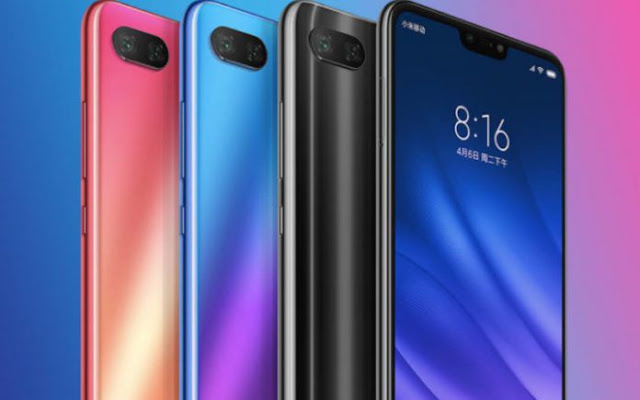Vivo V11 Review: Good Mid-ranger
The Vivo V11 or the V11i,
whatever you call it, is Vivo’s new not-so-new smartphone of the
V-series. The device has gathered a lot of attention right now, and I
feel like it’s the right time to do its full review, after all, I have
used it for 3 months already. I kind of like the device for its price,
but there are a few shortcomings. So, let’s get started.
Vivo V11 Specifications:
- Display: 6.3 inches, IPS LCD
- Resolution: 1080 x 2280 pixels, 19:9 ratio (400 PPI density)
- Dimensions: 155.9 x 75.6 x 8.1 mm (6.14 x 2.98 x 0.32 in)
- Weight: 163g
- Chipset: MediaTek MT6771 Helio P60 Octa-core (4×2.0 GHz Cortex-A73 & 4×2.0 GHz Cortex-A53)
- GPU: Mali-G72 MP3
- OS: Android 8.1 Oreo with Funtouch OS 4.5
- RAM: 4GB
- Internal Memory: 128GB; expandable up to 256GB
- Primary Camera: Dual 16 MP + 5 MP, 1080p@30fps
- Secondary Camera: 25 MP, f/2.0, 1080p@30fps
- Sensors: Fingerprint, accelerometer, gyro, proximity, compass
- Battery: Non-removable Li-Ion 3400 mAh battery, Fast Charging
- Available Colors: Starry Night, Dazzling Gold, Nebula
- Price: Rs 39,990
Design
2018 has been the year of glass back phones. Even the mid-range devices
are providing glass back smartphones. And the ones that have stuck with
metal, come with quite a premium feel to it. However, the Vivo V11 has
taken a different route here. It features a glass-like plastic back. And
this is where I have an issue. The back is cheap and over time it has
developed a lot of scratches. Yes, plastic backs are more secure than
glass, but I think a phone like the V11 should have at least a metallic
back. This back is probably the reason why it is light, and I kind of
don’t like that. But this is totally my personal preference. The same
goes with the buttons that are all on the right side. They feel cheap,
and I just don’t like the feel of it.
Samsung Galaxy A50 Review: Good mid-range
In 2019, Samsung flooded the entry-level and mid-range segment with a
number of phones. Although the latest Samsung smartphones are too hard
to keep track of, I was particularly intrigued with the Samsung Galaxy A50.
Since it’s the least expensive smartphone in Nepal with triple rear
cameras and an in-display fingerprint sensor, I was really eager to test
how the device really fares on real-life use. And so, this is my
Samsung Galaxy A50 review after two weeks of use.
Samsung Galaxy A50 Specifications:
- Display: 6.4-inch Super AMOLED display
- Resolution: Full-HD+ (2340×1080 pixels); 19.5:9 aspect ratio @ 403PPI
- Chipset: Exynos 9610 Octa
- CPU: Octa-core (4×2.3 GHz Cortex-A73 & 4×1.6 GHz Cortex-A53)
- GPU: Mali-G71 MP3
- RAM: 4GB
- Storage: 64GB; Expandable up to 512GB (Dedicated SD Card Slot)
- OS & UI: Android 9.0 (Pie) with Samsung’s OneUI on the top
- Rear Camera: Triple camera – (25 MP, f/1.7, PDAF) + (8 MP, f/2.2, 12mm, (ultrawide)) + (5 MP, f/2.2, depth sensor), LED flash
- Front Camera: 25MP, f/2.0
- Sensors: Fingerprint (under display), Gyro, accelerometer, proximity, compass
- Battery: 4000mAh with 15watt fast charging support; USB Type-C port
- Colors: Blue, White, Coral, and Black
- Price: Rs. 33,490
Design
Xiaomi MI 8 Lite Review: Low Price Good Quality
The Xiaomi MI 8 Lite features 6.26-inch IPS display and comes with
glass back and metallic frame sandwiched in between. The display on the
handset comes with a tall and narrow 19:9 aspect ratio fitting a notch
on the top. The notch on the device is smaller than the Redmi Note 6 Pro
as it only houses a single 24MP selfie shooter and other basic sensors.
On the back, the glass back with a gradient color pattern is home to
the dual camera setup and a fingerprint sensor. The camera duo comprises
of a 12MP and 5MP sensors, which is capable of capturing portrait
images as well.
On the battery front, the smartphone is slighter richer when it comes
to the mAh counts. But due to the polished and optimized stock version
of Android, there is no significant difference in terms of battery
backup when compared with the MI A2.
Xiaomi MI 8 Lite Specifications:
- Display: 6.26-inch IPS LCD display with 2.5D curved glass on the top
- Resolution: Full-HD+ (2280×1080 pixels), 19:9 aspect ratio
- Chipset: Qualcomm Snapdragon 660
- CPU: Octa-core (4x 2.2GHz Kryo 260 + 4x 1.8GHz Kryo 260)
- GPU: Adreno 512
- RAM: 4GB LPDDR4 RAM
- Storage: 64GB; Expandable up to 256GB
- OS & UI: Android Oreo with MIUI 10 on the top; Upgradable to Android Pie (v9.0)
- Rear Camera: 12 MP f/1.9 + 5 MP, f/2.0 depth sensor with LED flash
- Front Camera: 24MP
- Battery: 3350mAh battery with Qualcomm Quick Charge 3.0 support
- Connectivity: Wi-Fi 802.11 a/c/b/g/n, WiFi Direct, Hotspot, Bluetooth 5.0, no 3.5mm headphone jack, USB Type-C, USB OTG support
- Sensors: Fingerprint (rear-mounted), accelerometer, gyro, proximity, compass
- Price (4/64GB): Rs. 31,999






0 comments :
Post a Comment